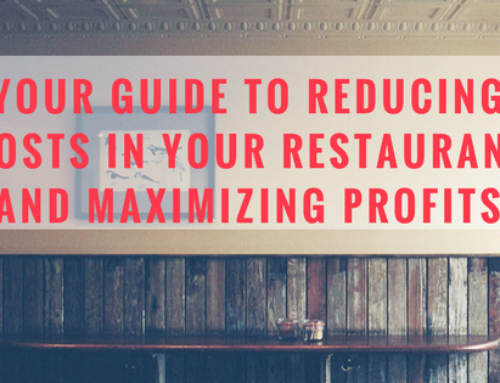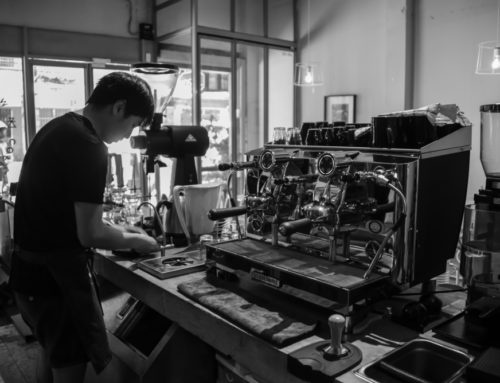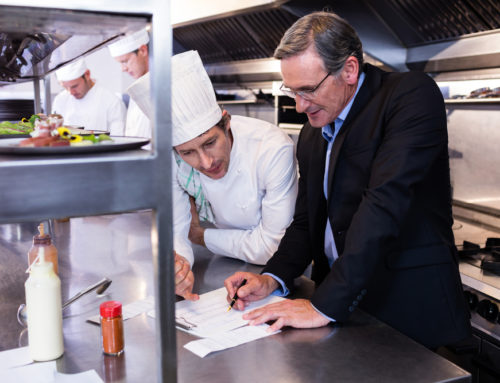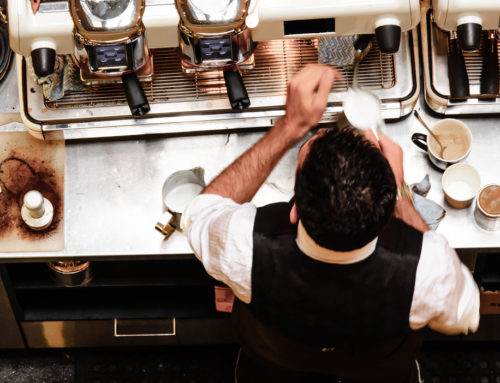The dinner rush of a restaurant is arguably the most significant part of our day. It’s where we see the most profit and the most action. There’s also a bigger potential for mistakes if we aren’t prepared for it.
Our role as leaders during this time is simple – we want to make sure the flow of the restaurant stays consistent and that the guests are having a good time.
There is a routine to every role in the business and being a manager is no exception. Without following one, it can be easy to fall behind or become unsure of what exactly we should be doing.
Every restaurant has one thing in common, which is that we want our guests to come back. If we can guarantee that all our guests leave happy, even during our busiest time of business, we know we’re doing something right.
These five tasks are the bread and butter of what we as managers should be paying attention to during the rush.
Assist the Hostess Team at the Front Door
The front door is so important to the success of our restaurant. It’s where we welcome our guests and give off our first impressions. It’s where they decide in five seconds or less whether they made the right choice.
Working the front door gives us a huge advantage because we get the chance to speak to every guest that walks in while also controlling where they sit and when.
Conversing with them now makes it easier to approach later and controlling the table sections keeps us attentive to what’s happening in the restaurant.
When most of our guests have been seated, it’s time for us to move on in our routine.
Keep an Eye on Table Sections and Sizes
First, we want to be on the lookout for any tables that may not have been approached. It is guaranteed that at least once per shift, a server will forget a table is in their section or be too preoccupied to greet them.
We also don’t want our servers getting sat more than one table at a time. Remember, it’s all about flow. As our servers get busier, we want each of their guests being sat at different times because then they will order at different times.
Lastly, let’s pay attention to how many tables each server has. If our staff has more tables than they can handle, the guests will suffer from poor service. We want to be in constant communication with them over their sections while having a firm grasp on what each of their sections is so that we are aware of what they have at all times.
Pay Attention to the Order Screens
A great kitchen team makes all the difference, but even the best of them cannot handle a full screen that fills up in five minutes or less.
In a perfect world, this should never happen, but sometimes luck is not on our side. If we want to come out on top regardless, we must remember to communicate with the kitchen as much as we can.
If ten entrées pop up on the screen and the kitchen didn’t know about it beforehand, we’re not doing our jobs. The key thing to remember is that we want the kitchen to know what’s coming in before it does. This goes back to keeping an eye on table sections.
We also want to try and prevent bill bashing and double-seating. If our servers are ringing in two sets of orders at the same time, it can overwhelm the kitchen with too much at once. Ensuring they are not double-sat can help stop this from happening.
Make our Rounds Between the Bar, The Kitchen, and the Front Door
Odds are, our assistance is needed somewhere in the restaurant. Perhaps the bar filled up and both bartenders are too busy to stock the ice. Then, maybe our expo is getting overwhelmed with putting the entrées together and needs to grab ketchup from the back. Suddenly our new server needs help figuring out allergies for one of their tables and a guest wants a specific game on in the lounge.
For this reason, we need to keep moving. When the front door and our server sections look okay, let’s move on the kitchen (the expo station). When the kitchen looks okay, we can go check out the bar.
A great leader is there for his or her staff before things can get out of hand. For that to happen, we need to stick to our routine and be on the constant lookout for anything that might disrupt the flow of our restaurant.
Talk to Every Table in the Restaurant
Here is the final step – one that separates the good managers from the great.
We should be approaching every table in our restaurant and here’s why:
Our guests are a top priority and we want to make sure they’re having a great time. How can we be sure of that if we never speak to the guests, ourselves? Don’t we want to know what our guests are thinking?
Approaching is a great way to get feedback on the food and the experience while also engaging in some fun conversation and connecting with our guests.
In my experience, most tables are surprised to have the manager speaking with them because they’ve never seen it before. How many restaurants have you been to where the representative of that business came out to talk to you, specifically? That never happens!
We want to separate ourselves from the other establishments out there by letting the guest know that we are there for them, personally.
The key thing to remember is that we want our guests to leave happy. Our dinner rush is usually the most significant time for us to be on our A Game, and by sticking to a routine that keeps the restaurant flow intact, we will guarantee nothing less.









Leave A Comment